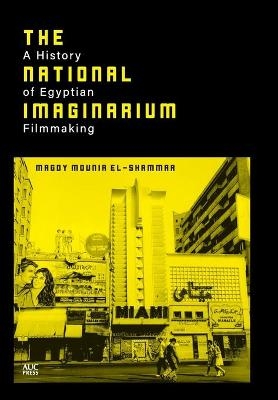
The National Imaginarium
The American University in Cairo Press (Verlag)
978-977-416-972-4 (ISBN)
The National Imaginarium provides an in-depth description of the films discussed. It explores the construction of a populist consciousness that permeated and transcended class structures at mid-century in Egypt, and how this subsequently came undone in the face of the bewildering social, economic, and political transformations that the country underwent in the decades that followed. More than similar treatments of the topic, this book draws on theoretical ideas from outside the immediate discipline of Film Studies, including investigations into the materiality and colonial foundations of cosmopolitanism, the stakes and aesthetics of realism, policy shifts around women’s rights, transnational economic contexts, and the broader history of the country and region, including insightful snapshots of everyday life.
Magdy Mounir El-Shammaa holds a PhD in Ottoman and modern Middle East history from the University of California, Los Angeles. An independent scholar, he has taught at the University of Alberta, Canada, and the American University in Dubai. His current research interest is the historical roots and roles of populism, sectarianism, and regional rivalries in the wake of the Arab uprisings.
Prologue: The National Imaginarium
1. Early Egyptian Filmmaking: Reel vs. Real
Colonial Cosmopolitanism and Egyptian Film Histories
Behind the Silent Scenes
The Impact of Sound
Studio Mizrahi: Sharikat al-Aflam al-Misriya (The Egyptian Film Company)
On the Silver Screen
The Twilight of Colonial Cosmopolitanism
Toward the Construction of a Populist National Identity
2. Realism, Modernism, and Populism in Revolutionary Times
Cinema, Memory, and History
Awlad al-balad and the Effendiyya: Definitions and Redefinitions
Nasserism, “Realism,” and Salah Abu Seif
Culture and Hegemony
3. Reading A Woman’s Youth: Gender, Patriarchy, and Modernism
A Woman’s Youth (Shabab imra‘a, 1956)
4. The Revolution’s Children: Gender, Generation, and the “New” Patriarchy
The Children Are Watching
Feminism, Revolution, and the “New” Patriarchy
Nationalized Film Production: The Golden Age and State Feminism
5. Behind the Silver Screen: Market, Artist, and State in the Production of Culture
Reconstructing Filmmaking in the 1950s
The Film Industry and Nasser’s Egypt
Politics and the Public Sector
Nationalizing Culture: The State Film Industry
6. Pathos and Passions: The Twilight of Nasserism
Pathos
Chahine’s Cinematic Vision
Passions
7. Egyptian Cinema in the 1970s: Sadat’s Infitah on Screen
A “Golden Age” after the Golden Age?
Sadat: Rectification and Infitah
Post-populist Egypt on Screen
The 1970s Cinema by the Numbers
Adil Imam
Sadat: War, Peace, and Islam
8. Mubarak’s Egypt and End-of-century Egyptian Cinema
Egypt of the 1980s on Film
End-of-century Egyptian Cinema by the Numbers
The Roaring ’90s and Neoliberalism
The Roaring ’90s and the Silver Screen
Epilogue: All That Is Old, Is New Again . . .
Notes
Appendix
Bibliography
Index
| Erscheinungsdatum | 10.05.2021 |
|---|---|
| Verlagsort | Cairo |
| Sprache | englisch |
| Maße | 150 x 230 mm |
| Themenwelt | Kunst / Musik / Theater ► Film / TV |
| Kunst / Musik / Theater ► Kunstgeschichte / Kunststile | |
| Geisteswissenschaften ► Geschichte ► Regional- / Ländergeschichte | |
| Sozialwissenschaften ► Kommunikation / Medien ► Journalistik | |
| Sozialwissenschaften ► Kommunikation / Medien ► Medienwissenschaft | |
| Wirtschaft | |
| ISBN-10 | 977-416-972-7 / 9774169727 |
| ISBN-13 | 978-977-416-972-4 / 9789774169724 |
| Zustand | Neuware |
| Haben Sie eine Frage zum Produkt? |
aus dem Bereich


